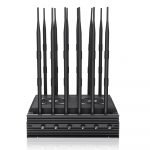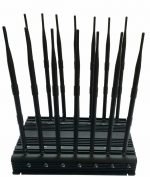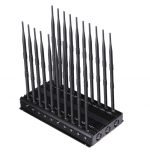What Does a Wireless Jammer Do?

The basic difference between a mobile and stationary wireless jammer is their price. The cheaper the mobile model, the lower the price, but the more powerful the station is, the greater the jamming radius and range. A jammer that can jam a wider band of frequencies requires a more powerful interference generator and a larger antenna. Stationary jammers need 230 V power and forced cooling, and the price range is generally around a hundred meters.
Blocks WiFi
A Wireless jammer is an electronic device that disables the signal of a WiFi network. WiFi and Bluetooth are used to transmit information over a wireless network, and both are capable of tracking location. The triangulation of location occurs when the signal reaches a cellular tower, but this process is not relevant to our daily lives. This device blocks WiFi signals to ensure that your location remains private. In addition to blocking WiFi signals, it also blocks Bluetooth.
Blocks Bluetooth
A wireless jammer blocks Bluetooth signals. Bluetooth technology uses 2.4 GHz frequency to transmit data, making it ideal for sharing data between two devices. This frequency is also used by wireless networks, like Wi-Fi. But what exactly happens if your Bluetooth device gets interrupted by a wireless jammer? Here are some tips to keep your Bluetooth device from being disrupted. Read on to find out what a Bluetooth jammer does.
Blocks cellular signals
A wireless jammer blocks cellular signals by transmitting a signal that interferes with a cell phone’s reception. This signal, which is created through a radio wave, is a common nuisance in certain places, and it can also prevent the use of cellular phones altogether. While some people consider this to be theft, a jammer does not work preferentially. It simply blocks the signals that a cell phone would normally receive.
Blocks satellite signals
A satellite signal jammer works to block all satellite signals from reaching a specific location. Specifically, it can interfere with the signals used by GPS tracking devices, which means they cannot determine your exact location. These devices can be detected only when they receive a signal at a specific frequency. Therefore, they do not work to track your location, and your safety is at stake. Jammers are not effective in blocking all satellite signals, but they can help block certain frequencies.
Blocks GPS
A wireless jammer blocks GPS signals, making it difficult for a satellite to detect your location. Jamming GPS signals has several uses, from blocking the GPS-based road tolls to blocking autopilot in drones. Among its numerous benefits, this device is both effective and versatile. It can operate independently and simultaneously and create a shield radius up to 40 meters. It can also prevent satellites from tracking your movements and help you to protect your privacy.
Blocks cell phone
When you are looking for a wireless jammer to block cell phones, there are a few things you need to keep in mind. While most of these devices can jam signals up to 30 feet away, you may need more powerful units that block more than one channel. The best jammers are those that block multiple channels, but they cost more than single-band jammers. You can also purchase less expensive models that can block a specific signal and work on batteries. These jammers can also only be effective in small areas and are very inefficient for strong signals.
Blocks Drones
Despite the fact that local law enforcement has very little authority to regulate drones, some activists are hoping to use a wireless jammer to block them. While this technology has the potential to disrupt drones’ communications, it is not foolproof and can interfere with other radio signals. That’s why the jammer needs to be calibrated properly. There are many factors to consider, including the size of the drones themselves and the proximity of other objects that could be affected by the jammer.








